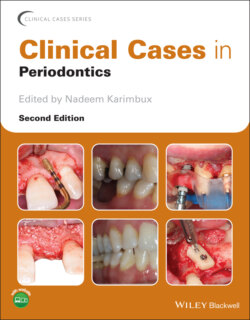Читать книгу Clinical Cases in Periodontics - Группа авторов - Страница 71
Discussion
ОглавлениеMost patients who have gingival enlargement present with the chief complaint of an unesthetic smile. Comprehensive medical and dental histories (A) as well as a complete periodontal examination are needed to come to the appropriate diagnosis. Most commonly, gingival enlargement is a dental plaque‐induced gingival condition modified by medications such as phenytoin, cyclosporine, or calcium channel blockers [1]. In some rare cases, a non‐plaque‐induced gingival enlargement called hereditary gingival fibromatosis (A) may be seen.
Once the diagnosis is determined, the treatment plan includes oral hygiene instructions, an initial phase of treatment (scaling and polishing), and communication with the primary care physician for potential alternative medication to address the systemic condition (G). Phase 1 therapy is followed by periodontal reevaluation at four to six weeks. If the gingival enlargement persists at this visit, surgical excision of excessive gingiva is recommended with subsequent reinforcement of home care oral hygiene and a periodontal maintenance every three months is instituted (G).
In a recent case report, Capodiferro et al. [2] showed that nonsurgical periodontal treatment by an Er:YAG laser also promoted regression of gingival overgrowth in patients taking cyclosporine.
